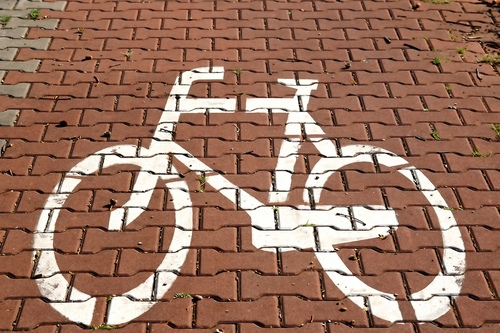 It might be the biggest cliche about Christmas for a kid: coming down the stairs on Christmas morning to find a shiny new bicycle. I can think of worse things to buy your kid than a mode of transportation that uses no fossil fuels. Biking is a lifelong activity that takes place in the great outdoors, is good for your health and good for the planet. However, buying a child’s bike can be a lot more difficult than an adult’s, mainly because there are many more low-quality bikes out there, sold by people who don’t really know a lot about bikes. And how do you teach your kid the rules of the road so they can grow to become responsible adult cyclists? Here’s a few resources to answer questions you may have about your child and biking.
It might be the biggest cliche about Christmas for a kid: coming down the stairs on Christmas morning to find a shiny new bicycle. I can think of worse things to buy your kid than a mode of transportation that uses no fossil fuels. Biking is a lifelong activity that takes place in the great outdoors, is good for your health and good for the planet. However, buying a child’s bike can be a lot more difficult than an adult’s, mainly because there are many more low-quality bikes out there, sold by people who don’t really know a lot about bikes. And how do you teach your kid the rules of the road so they can grow to become responsible adult cyclists? Here’s a few resources to answer questions you may have about your child and biking.
The International Biking Fund is a wonderful resource for information on cycling in general, and that means children’s cycling, too. I don’t think I could give you better advice on the ins and outs of buying a bicycle for a child of any age. They have a guide for sizing a bike and what to look for when purchasing a bike for you kid. Once you know what you are looking for, don’t be afraid to check out Gigoit, Craigslist, or Freecycle for used bikes that meet the specifications you are looking for.
When your child is first learning how to ride, there are several safety rules you can emphasize, even to beginning riders. The first, and most obvious, rule, is to always wear a properly-fitted helmet. You can also encourage young riders to keep both hands on the handlebars unless signaling and to keep on the lookout for any debris or roadblocks on the sidewalk or street. Young kids can even practice using hand signals once they are steady on their bike.
Once your older child is ready to ride, the roads are a significantly different experience than the sidewalks. The Consumer Products Safety Commission has ten general tips for safe riding and a very cool zine-ish graphic novel called Sprocket Man aimed at older kids who are serious about cycling.
Taking care to ensure that your young cyclist grows up to be a responsible cyclist will keep them safe when they eventually take to the sidewalk, road, or trail.
[This post was written by Kelli Best-Oliver]
Leave a Reply